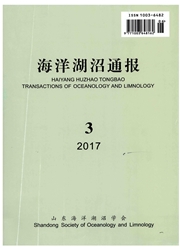

 中文摘要:
中文摘要:
对中国和日本海域花鲈属的3个种:花鲈(Lateolabrax maculatus)、鲈鱼(L.japonicus)和高体鲈(L.1atus)的S7核糖体蛋白基因片段序列进行了扩增和序列测定,分析比较了3个种23个个体间的序列差异。在456bp的S7核糖体蛋白基因片段中,3个高体鲈个体中出现了3种单倍型,种内个体间有2个碱基差异;7个花鲈个体中出现了7种单倍型,种内个体间有21个碱基差异;13个鲈鱼个体中出现了12种单倍型,种内个体间有22个碱基差异。结果表明,花鲈属S7核糖体蛋白基因片段序列具有丰富的遗传信息,在亲缘关系较近的物种间也存在显著的序列差异,基于S7核糖体蛋白基因片段序列的NJ和ME系统树经1000次重复抽样检验后得到相似结果,表明S7基因内含子2是适合于研究分子系统发育的分子标记。利用Modeltest选取最佳核苷酸替代模型构建的NJ树表明:花鲈属鱼类由高体鲈分化,花鲈与鲈鱼的亲缘关系很近,而与高体鲈的亲缘关系较远。
 英文摘要:
英文摘要:
The S7 ribosomal protein gene was used as a DNA marker for the phylogenetic analyses of the sea bass in this paper. To evaluate the genetic variance of Lateolabrax maculares, L. japonicus and L. latus, partial sequence of the 2nd intron of S7 ribosomal protein gene were determined by PCR for 23 Lateolabrax specimens. Alignment of 456 nucleotide sites was used in the phylogenetic studies. Of these sites, three haplotypes and two of nucle- otide differences were observed in L. latus, seven haplotypes and twenty-one of nucleotide differences were found in L. Maculatus, and twelve haplotypes and twenty-two of nucleotide differences were found in L. japonicus. The results indicated that the 2nd intron of S7 ribosomal protein gene had abundant genetic information and significant difference between the closely related fish species. According to 1000 bootstrap replications, the cladogram constructed using neighbor-joining method was consistent with that using minimum evolution method, which indicated that the gene was an appropriate molecular marker for the phylogenetic research for Lateolabrax. The relationship between L. maculates, and L. japonicus was closely related, but they were far from L. latus.
 同期刊论文项目
同期刊论文项目
 同项目期刊论文
同项目期刊论文
 期刊信息
期刊信息
